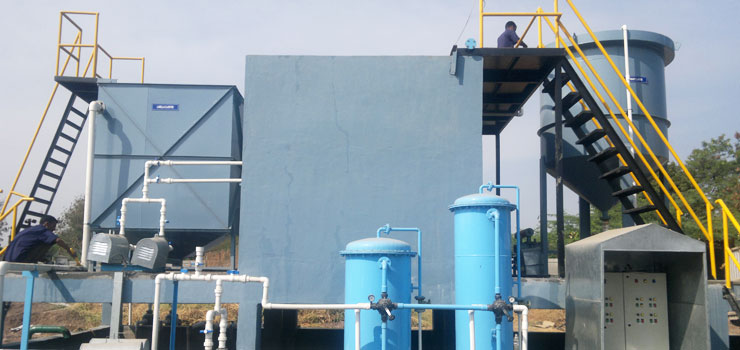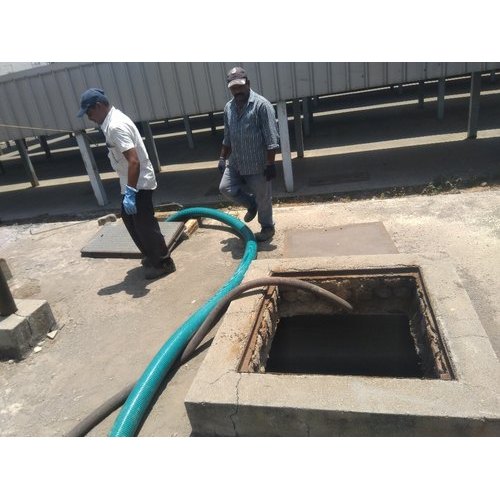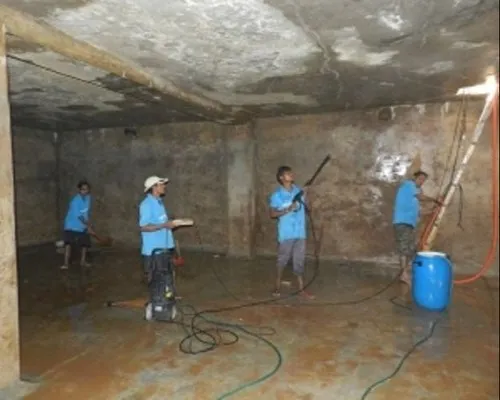The installation of an ETP (Effluent Treatment Plant) setup is a crucial step in establishing an efficient and environmentally friendly system for treating industrial wastewater. ETPs are designed to remove pollutants and contaminants from effluent, ensuring compliance with environmental regulations and minimizing the impact on surrounding ecosystems. In this article, we will explore the importance of ETP setup installation, the key components involved, and the benefits it provides in industrial wastewater management.
Understanding ETP Setup Installation
ETP setup installation involves the following key components:
1. Site Assessment: A comprehensive site assessment is conducted to evaluate the suitability of the location for installing an ETP setup. Factors such as soil conditions, groundwater levels, proximity to water bodies, and regulatory requirements are taken into consideration to ensure optimal system performance and adherence to environmental standards.
2. Design and Engineering: The design and engineering phase involves the development of detailed plans for the ETP setup. It includes determining the treatment capacity required, selecting appropriate treatment processes, and designing the layout of the plant to accommodate the necessary equipment and infrastructure.
3. Civil Construction: Civil construction involves the construction of various structures within the ETP setup, including the inlet chamber, primary treatment units, aeration tanks, secondary treatment units, settling tanks, sludge handling facilities, and the effluent discharge system. Construction activities adhere to industry standards and local building codes.
4. Installation of Equipment: Once the civil construction is complete, the installation of equipment takes place. This includes the installation of pumps, mixers, aerators, blowers, filters, clarifiers, chemical dosing systems, and other necessary components. Each equipment is carefully installed and connected to ensure proper functionality and efficient operation.
5. Electrical and Instrumentation Setup: The electrical and instrumentation setup involves the installation of control panels, sensors, meters, and other devices necessary for monitoring and controlling the ETP setup. Electrical wiring, grounding, and connectivity are established to ensure safe and reliable operation.
6. Commissioning and Testing: After the installation is complete, the ETP setup undergoes commissioning and testing. This phase involves functional testing of all equipment, calibration of instruments, and performance evaluation to ensure that the system is operating as per design specifications.
7. Operational Training and Handover: Once the ETP setup is successfully commissioned and tested, operational training is provided to the operators responsible for managing and maintaining the system. The handover process includes the transfer of all relevant documentation, manuals, and warranties to the plant owner or operator.
Benefits of ETP Setup Installation
Installing an ETP setup offers several benefits in industrial wastewater management:
Compliance with Regulations: ETP setups ensure compliance with environmental regulations regarding the treatment and discharge of industrial effluent. This helps industries avoid legal penalties, maintain a positive public image, and demonstrate their commitment to environmental responsibility.
Efficient Wastewater Treatment: ETP setups employ advanced treatment processes to effectively remove pollutants and contaminants from industrial effluent. They can treat a wide range of pollutants, including organic compounds, heavy metals, suspended solids, and toxic substances, ensuring that the treated effluent meets regulatory standards.
Environmental Protection: By treating industrial effluent before discharge, ETP setups significantly reduce the impact on natural water bodies and ecosystems. They help prevent water pollution, protect aquatic life, and preserve the overall environmental balance.
Resource Recovery: Some ETP setups incorporate technologies for resource recovery from wastewater. This includes the extraction of valuable byproducts, such as biogas, which can be used for energy generation, and the recovery of water for reuse in non-potable applications, reducing the strain on freshwater resources.
Cost Savings: Effective treatment of industrial effluent through an ETP setup can lead to cost savings for industries. By minimizing the volume of wastewater requiring off-site disposal and optimizing resource recovery, businesses can reduce operational costs and enhance their overall efficiency.
Call ~ 7447474074 ~ To Book your Service. Best Service @ Affordable Cost Assured.
Frequently Asked Questions (FAQs)
1. How long does it take to install an ETP setup?
The installation time for an ETP setup can vary depending on various factors, including the size of the plant, complexity of the design, and site-specific requirements. On average, it can take several months to a year to complete the installation process.
2. What maintenance is required for an ETP setup?
Regular maintenance is essential for the efficient operation of an ETP setup. It involves activities such as routine inspections, cleaning of equipment and tanks, monitoring of process parameters, and periodic servicing of pumps and motors. Proper maintenance ensures the longevity and optimal performance of the system.
3. Can an existing wastewater treatment system be upgraded to an ETP setup?
In many cases, existing wastewater treatment systems can be upgraded to incorporate ETP technologies and processes. However, a feasibility study is required to evaluate the suitability of the existing infrastructure and determine the scope of upgrades needed.
4. Are there any specific requirements for ETP setup installation based on the industry type?
Yes, different industries may have specific requirements for ETP setup installation based on the nature of their wastewater. Industries producing hazardous substances or chemicals may need additional treatment processes and safety measures to ensure effective treatment and regulatory compliance.
5. Are there any government incentives or subsidies available for installing ETP setups?
Government incentives and subsidies for installing ETP setups may vary depending on the country and local regulations. It is advisable to research and consult with local authorities to determine the availability of financial incentives, tax benefits, or grants that can support the installation of ETP setups.
6. How can an ETP setup contribute to sustainable development?
An ETP setup contributes to sustainable development by minimizing the environmental impact of industrial wastewater and promoting responsible water management. It helps conserve water resources, reduces pollution, and supports the overall sustainability goals of industries and communities.
Installing an ETP setup is a crucial step in establishing an efficient system for treating industrial wastewater. It involves site assessment, design and engineering, civil construction, equipment installation, and commissioning. The benefits of ETP setup installation include compliance with regulations, efficient wastewater treatment, environmental protection, resource recovery, and cost savings. By prioritizing the installation of ETP setups, industries can effectively manage their wastewater and contribute to a sustainable and cleaner environment.
Deep Cleaning Services ~ Water Tank Cleaning ~ Pest Control Services ~ Septic Tank Cleaning ~ rainage line cleaning ~ Housekeeping Services ~ Well Cleaning ~ STP Operation Services ~ STP Maintenance Services ~ STP Setup Services ~ STP Installation Services ~ STP Cleaning Services ~ Ground Terrace Cleaning Services ~ Ground Cleaning Services ~ Terrace Cleaning Services ~ Construction Waste Disposal ~ Construction Waste Disposal Services ~ Post Construction Cleaning Services ~ Post Renovation Cleaning Services




